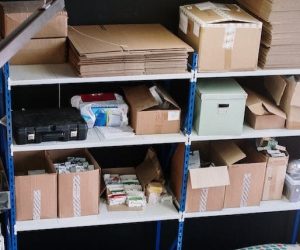Your roof is one of the most critical components of your home, providing protection from the elements and maintaining the structural integrity of your property. However, various roofing issues can arise over time due to weather, age, or poor installation. Identifying common roofing problems early on can help extend the life of your roof. Here’s a guide to spotting these issues and understanding what steps to take when they occur.

Leaks and Water Damage
One of the most common roofing problems homeowners face is water leakage. Over time, your roof can develop weak spots where water seeps in, leading to interior water damage, mold growth, and structural weakening. Water stains on ceilings or walls are often the first visible signs of a leak. The source could be damaged shingles, broken seals around vents or chimneys, or improperly installed flashing. Suppose you notice any signs of water damage. In that case, it’s essential to act quickly because repairing roof leaks promptly can prevent more severe damage to the interior of your home and help you avoid extensive repair costs. Inspect your attic regularly for any hidden signs of moisture, and call a professional to address any leaks you discover.
Damaged or Missing Shingles
Shingles are your roof’s first line of defense against the elements. Over time, they become cracked, curled, or even fall off entirely due to wind, hail, or sun exposure. Damaged or missing shingles leave your roof vulnerable to water infiltration and can accelerate the wear and tear on your roof. Inspect your roof from the ground or use binoculars to check for buckling, cracked, or missing shingles. If you notice significant damage, it’s best to call a roofing contractor to replace the affected shingles and perform a more detailed inspection to ensure no other areas are compromised.
Sagging Roof
A sagging roof is a clear indication that there’s a structural problem. This could be due to weakened roof supports, excess weight from snow or water, or issues with the foundation. A sagging roof can be dangerous and requires immediate attention to prevent a collapse. If you notice any areas of your roof that appear to be sagging or dipping, contact a roofing contractor to assess the situation. In some cases, the roof’s structural supports may need to be reinforced, or the entire roof may need to be replaced to prevent further damage.
Clogged Gutters and Flashing Issues
Your roof works with your gutter system to direct water away from your home’s foundation. If your gutters are clogged with leaves or ice, water can back up and seep into your roof or walls, leading to leaks and water damage. Check your gutters to ensure they are free from obstructions. Clean them out at least twice yearly or more frequently if you have overhanging trees. If your gutters are damaged, repair them to ensure they function correctly. Installing gutter guards also reduces the need for frequent cleanings and prevents blockages.
Flashing is the barrier installed around areas of your roof that are prone to leaks, such as chimneys, vents, and skylights. Over time, flashing can crack, rust, or pull away from the roof, leaving gaps where water can seep. Inspect areas around the flashing for wear, rust, or gaps. The flashing must be repaired or replaced to ensure a watertight seal if it is loose or damaged. A professional roofer best addresses flashing problems to avoid further damage or improper installation.
Moss or Algae Growth
Moss or algae on your roof may seem minor, but it can cause significant damage over time. Moss traps moisture against your roof’s surface, leading to shingles deterioration and causing leaks. Algae often cause unsightly black streaks on your roof, reducing your home’s curb appeal. To prevent moss and algae growth, trim tree branches that can provide shade and moisture. You can also have your roof cleaned professionally with a solution that kills moss and algae. Installing zinc strips at the roof’s ridge can help prevent future growth by releasing particles that deter these organisms.
Poor Roof Ventilation
Proper roof ventilation is essential for regulating temperature and moisture levels in your attic. Without adequate ventilation, heat and moisture will build up, causing damage to your roof’s structure and accelerating the aging process of your roof. Poor ventilation can also lead to ice dams in colder climates, where melting snow refreezes at the roof’s edge, causing leaks. Ensure your attic has proper intake and exhaust vents to promote air circulation. If your attic feels excessively hot or humid, consult a professional to evaluate your roof’s ventilation system, recommending improvements to enhance airflow and prevent future damage.

Identifying roofing problems early on can save you time, money, and stress. Regular roof inspections and maintenance are essential to catching these issues before they become major concerns. Whether fixing a simple shingle or addressing a more complex leak, taking prompt action will ensure your roof remains in top condition for years.



